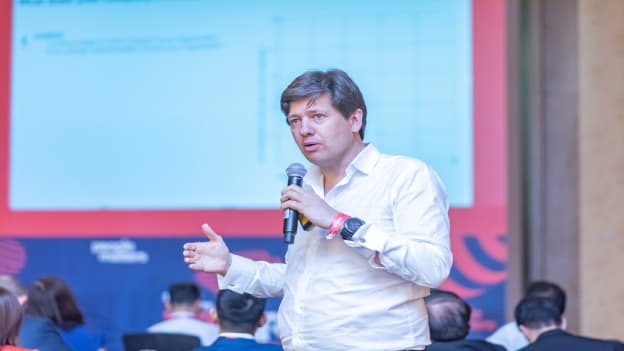How can human-centered design technology improve HR outcomes

TechHR Singapore 2019 Read similar articles

Due to the staggering speed and magnitude of technological change over the past decades, companies have been reallocating capital to increase efficiency across business units. This makes sense as a study done by McKinsey showed that companies that “reallocat(ed) capital significantly generated twice as much value over 20 years.”
Arne Gast, leader of McKinsey Organization Practice across the Asia Pacific, in TechHR Singapore 2019, raised the challenge of doing the same with people by focusing on creating a talent-first organization while acknowledging the difficulty of moving people within the organization.
“People usually join the company, they stay within their one business unit. They stay within their one function. And it’s very hard to move people around to the highest opportunities.” However, using the same principle in moving capital between business units and business functions could generate the same results as reallocating capital.
“Organizations need to match their best people to the best opportunity to generate higher returns.”
“It could be across business units, across business functions, sometimes younger kids in more senior positions… we need to become more fluid and more purpose-driven in putting the right people to the biggest opportunities,” says Arne.
This requires changing the current thinking where HR processes were designed from a systems view without explicitly looking at the human element. “HR processes were designed by HR from the system side, not from the human side. (I)n design thinking, you flip it around. You start thinking, who exactly are the people that work in this company. Is it one kind of people or a different kind of segments? Think of the different segments or personas. What are their needs? A young millennial, not married or early will have a different need from somebody who’ve worked here for 20 years, will have different needs from that of an international person. (I)f we really think about their needs and their journeys, we can redesign our people processes or even our financial processes… to make it easier for them or better for them to deliver results and create a better experience at the same time” Arne explains.
The numbers support this. Creating great employee experience results in 23% better individual work performance, 40% more discretionary effort at work, and 23% lower turnover likelihood. From the individuals, business units perform better with 10% greater customer satisfaction and achieving 20% more sales. Consequently, as the whole is the sum of all its parts, the organization attains better performance and reputation compared to companies with low employee experience. Some of the benefits include 2.3 to 3.8% increase in long-run stock performance, double the revenue, 4.4X profit, 3X more frequently seen as a top value brand.
A human centered design process
To generate these types of results, a human-centered design process is required.
Matthew Durack, leader of McKinsey Design in Singapore, insisted on bringing back the human factor in the design thinking process reminding the audience that, “Design thinking is a human-centered approach for creative problem solving that integrates the needs of people, the possibilities of technology, and the requirements for business success.”
“We start with understanding the end customer of these processes – behaviors, motivations, and pain points,” said Matthew. “Curated experiences – and the business models, products and services that enable them – are increasingly driving loyalty, differentiation, and value.”
Companies that can address the human needs are able to create better experiences not only for their customers but their employees leading to higher returns.
By understanding employees’ pain points through their employee journey, the relevant technology can be applied. This could range from employees filing complaints to HR to staff learning and retaining new knowledge and skills. The employee journey in HR complaints could be smoothed out through a simple tweak in the organization’s website, where HR contact details and forms are easily found, and updates are visible. On the other hand, “learning apps with nudging capabilities help employees learn and retain knowledge for longer.”
To understand human needs, Matthew suggested getting to know the purpose. Individuals and organizations have a purpose – it is their driving force. Unfortunately, as organizations grow and transform, they lose sight of their driving force.
One reason for this is the reliance on ad agencies to develop the organization’s purpose. “Companies spend too much time on the sentence, which leads to nowhere,” said Arne. Consequently, the distinguishing need of people, the empathy, gets lost.
To counter this, the purpose of an organization needs to be conveyed at the earliest interaction with potential staff. The traditional process of a one-size fits all approach in the recruitment process is expensive and hard to scale. With technology, potential employees are treated as consumers and their needs addressed at various stages. Companies like Finnair and Google engage with prospective clients through social media or via an interactive website. Deutsche Telekom, SouthWest, and General Electric improve the candidates' experience by using AI.
“The purpose is never the mantra, it is the metrics,” aptly summed up Arne.







